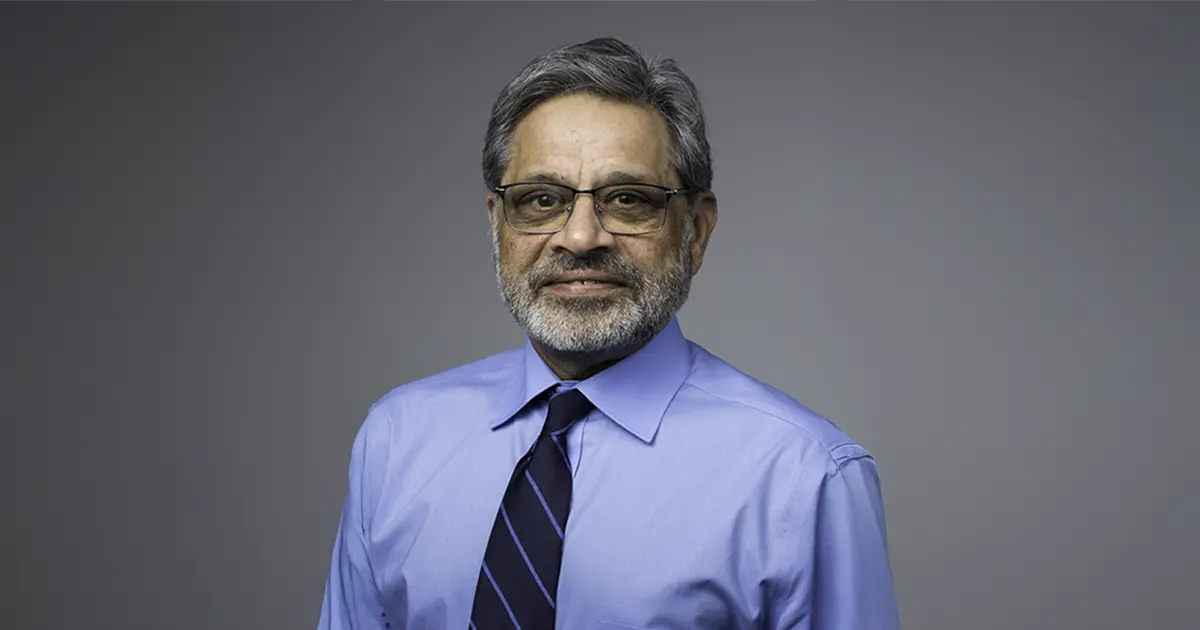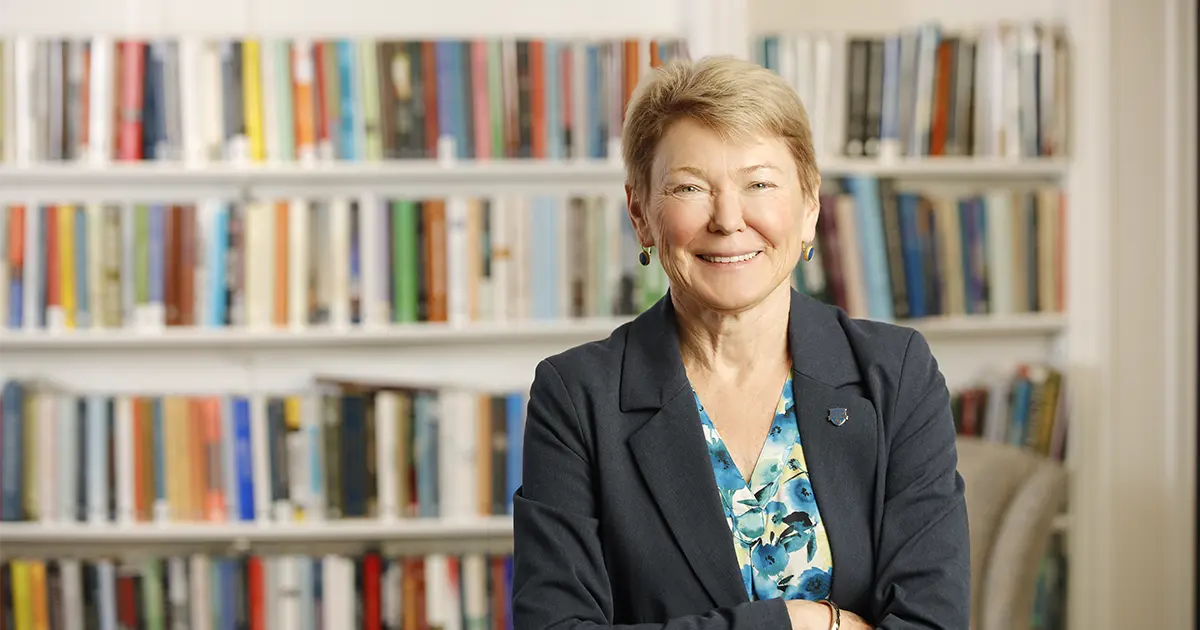Strat Chat with Ravi Shankar
Rochester’s interim vice provost discusses why global engagement necessitates a ‘global’ response.
Rochester’s interim vice provost discusses why global engagement necessitates a ‘global’ response.
TL;DR
You would only have to go back to 2013 to visit a time when the University of Rochester’s Office for Global Engagement did not exist—which frankly, seems incredible given the state of today’s office. TToday, the office provides comprehensive services that continue to extend the University’s reach and breadth through its partnerships, people, and programs. Ravi Shankar, the interim vice provost for global engagement, discussed how the office typically operates and how it’s adapting in atypical times.
Boundless Possibility is driving Rochester to a position that enables it to more easily and successfully attract the best people, develop the strongest partnerships, and secure the most funding for critical research. The degree to which the University succeeds in these areas determines its ability to further distinguish itself among its peers on a global scale. A key University player in this endeavor is the Office for Global Engagement (Global).
Since 2014, Global, which comprises the Center for Education Abroad (CEA) and the International Services Office (ISO), has served as the University’s primary connection to the rest of the world. The office aims to continue extending the University’s reach through partnerships, academic opportunities, the broad range of campus life, and initiatives that enhance the University’s global profile and reputation.
How global is the University currently? Some points of pride:
- 3,800+ international students
- 400+ students who participate in study abroad programs
- 130+ countries are represented by the University’s international community of faculty, staff, clinicians, and students
- 30+ countries hold 100+ institutional partnerships
From 2014 to 2024, Global was led by Jane Gatewood, who built the office from the ground up, expanding the University’s global and institutional partnerships, guiding the University’s schools as they cultivated mutually beneficial international relationships, and laying the groundwork to refresh the model for the institution’s education abroad programs. Jane left the University to return to her alma mater, Emory University, where she is serving as vice provost for global engagement and services. In the fall of 2024, Ravi Shankar became the interim vice provost for global engagement.
Ravi joined Rochester in 2019, just a couple months before the Covid-19 pandemic took root, as the assistant vice provost for international services and support at the University. In that role, he led a team that provides comprehensive support and engagement to more than 4,000 international students and scholars. The tempestuous nature of the pandemic and his work with the Coronavirus University Restart Team prepared Ravi to lead the Global team in a similarly turbulent era for the University.
Ravi joined Joe Testani, the deputy to President Sarah Mangelsdorf, for a Strat Chat around the time when executive orders and federal policy shifts cast an ominous shadow over our international community and critical research funding. While we know more now than we did then, much of the conversation remains relevant, offering a perspective on how we’ll move forward and react to additional changes.
Here are some of the highlights from Ravi’s chat.
Global response
When asked how he and his team have been responding to the concerns of our international students and faculty, Ravi chose to take a step back first. He pointed to the cohesion of the Global framework (i.e., CEA and ISO) we mentioned earlier. He praised the prescience of senior leadership, which in early days, called for a coordinated response from all schools and their respective departments.
The response had to be institutional rather than piecemeal due to the broad impact it would have on the University. That perceived effect was increasingly proven to be true as new executive orders came out. And it was never going to be just about how a single policy would affect a specific member of the international community. Many students and employees faced uncertain futures, creating a wide swath of anxiety across the University.
Ravi also applauded the University’s holistic approach. Yes—the University was quick to step in with legal help and consult on their immigration status, but the heroism was the team effort. The Department of Public Safety, International Student Affairs, Office of Council, Student Life team (led by John Blackshear), University Counseling Center, and others all came together to support students’ well-being.
In addition to the efforts of these offices, several town halls were held to ensure that the entire University community had opportunities to get answers to their questions.
Strategic global engagement
The conversation turned to Boundless Possibility and how Global is integrating and supporting strategic plan goals. Ravi started with healthcare—it’s about partnerships.
Global works closely with the medical center to identify areas where it would be particularly advantageous to establish international relationships—this could include research capacity building or collaboration in critical research areas. There’s also the medical center’s people. “We are really helping URMC attract the best and brightest,” said Ravi, calling attention to the work ISO does to bring physicians from other countries to the medical center, including the initial employment visas and the ongoing immigration support.
In terms of global reputation, Global is helping the University find opportunities to enhance its international engagement and research. “Currently, I think we have about 80 partnerships that are very active,” said Ravi. “And we monitor these partnerships very carefully on an ongoing basis because it’s not enough for these partnerships to just exist. It’s an active environment, and we want to be productive.”
One of the latest exciting developments in this area is the signing of a memorandum of understanding (MOU) with the University of Turku in Finland. Driven by faculty members who have a working relationship with Turku faculty, the MOU opens up opportunities for Rochester faculty and students to study climate change and sustainability via Finland’s Arctic station. Additionally, faculty at the Hajim School of Engineering & Applied Sciences are working with researchers in Peru to study Peru’s healthcare systems.
To ensure these and other partnerships continue to be fruitful, Global is launching a program to assess the status of our partnerships and how they can be improved.
In our exceptional education goal, ISO and CEA are doing the heavy lifting, working with current and incoming international students to support their academic and career goals. Global is also thinking about how the University can increase faculty-led education abroad programs to reduce the use of third-party providers (saving the University money). And the office is always looking for ways to make the University the most welcoming environment and remove any barriers to academic success. Ravi shared that ISO ran a year’s worth of focus groups and conducted a survey to gather qualitative data that will inform future tactics.
International investment
Why should we continue to invest in international partnerships and students? How does it help Rochester?
Ravi’s initial response to these questions was “I think we’re at a point where the US has lost some of its competitive edge.” He credited that to other countries having the research and academic infrastructure that more successfully attracts international students. We see the effects most clearly in research, an area where you must literally and figuratively work across boundaries to achieve the best results.
“We are enriched by these collaborations,” Ravi said. “And if you look at what attracts students and researchers to come to Rochester beyond reputation, it’s the opportunity to study and work in an environment that is dynamic and robust and exciting.”
Ravi is especially excited about the University’s image campaign, which Page Hetzel, the vice president of marketing and communications, mentioned in her strat chat. “Our story is hidden,” he says. “The impact of our work is really measured on a global scale. That’s why it’s even more critical for us to identify the right partners. We don’t go out and sign an MOU for the sake of signing an MOU. We’re looking closely at whether it makes sense.”
Global being global
“One of our key organizing principles is to employ a collaborative spirit,” Ravi said, noting that when it comes to their work, he told the ISO staff, “We’re not it; we’re part of it.”
Ravi emphasized that more departments and units that get involved with the academic and support needs of the international community, the stronger the University will be for it. And that can be as simple as being equipped to answer some basic questions instead of redirecting someone straight to ISO.
“It’s all about bringing everyone into the conversation,” Ravi said. “Collaboration is the keyword here.”
Related updates
President Sarah Mangelsdorf reflects on the University of Rochester’s strong progress, campus growth, and resilience heading into 2025–26.
The refreshed brand builds on the University’s 175-year legacy while spotlighting its vision and values.
The comprehensive campaign seeks to raise $1.75 billion for Rochester’s future while expanding alumni and community engagement.








